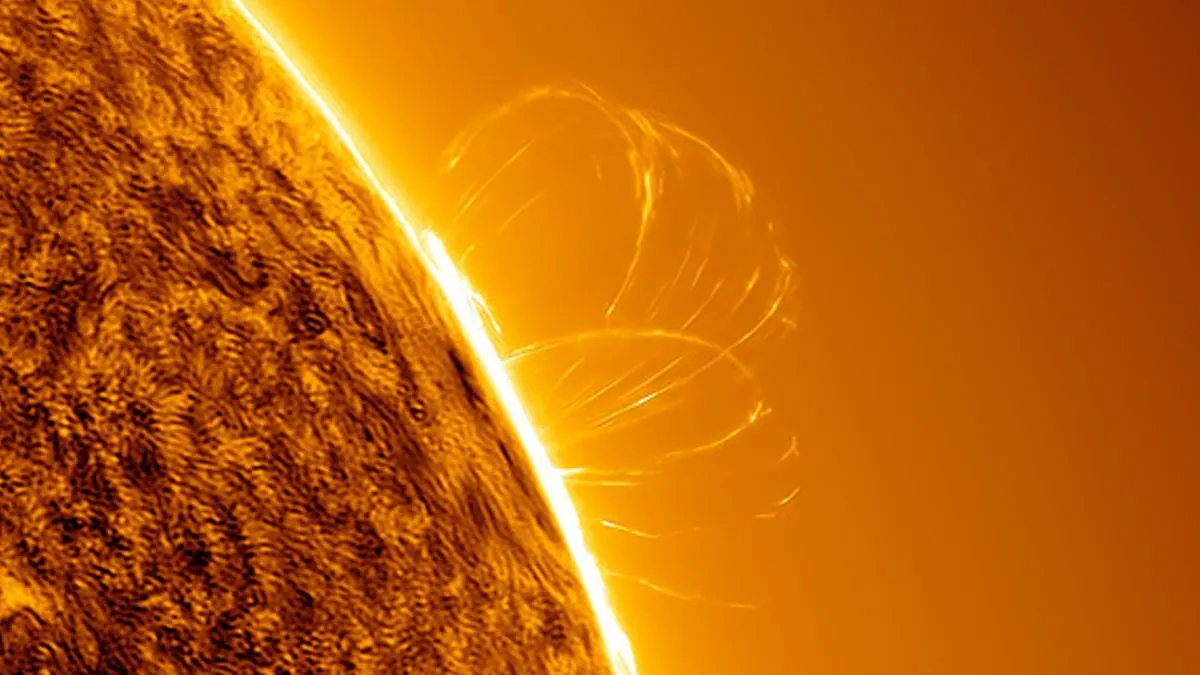In a remarkable display of solar activity, an Argentinian astrophotographer has documented two extraordinary events on the Sun's surface. These observations provide a fascinating glimpse into the dynamic nature of our nearest star.
Eduardo Schaberger Poupeau, a 51-year-old astrophotographer from Rafaela, Santa Fe, Argentina, captured these phenomena in late August and early September 2023. His images reveal the immense power and complexity of solar activity, offering valuable insights for both scientists and space enthusiasts.
On August 27, 2023, Poupeau observed a rare occurrence near the solar equator. He documented a plasma prominence completely detached from the Sun's surface, floating approximately 70,000 kilometers above it. This ethereal structure stretched an impressive 150,000 kilometers in length, showcasing the Sun's ability to create large-scale plasma formations.
Just a few days later, on September 2, 2023, Poupeau witnessed another spectacular event. At 10:20 AM Argentina time, a powerful M 5.5-class explosion occurred on the southeastern limb of the Sun. This eruption revealed stunning plasma loops reaching heights over 100,000 kilometers. What made this observation particularly noteworthy was the longevity of these structures, which remained visible for more than six hours.
These observations highlight the Sun's incredible energy output and its constant state of flux. The Sun, a yellow dwarf star approximately 4.6 billion years old, is the powerhouse of our solar system. With a surface temperature of about 5,500°C and a core temperature estimated at 15 million°C, it generates an enormous amount of energy through nuclear fusion of hydrogen into helium.
The Sun's influence extends far beyond its visible surface. Its magnetic field, which reverses polarity approximately every 11 years, plays a crucial role in shaping these plasma phenomena. Solar flares, like the M 5.5-class explosion observed by Poupeau, can release energy equivalent to millions of 100-megaton hydrogen bombs.
It's worth noting that the Sun's atmosphere, called the corona, is paradoxically hotter than its surface. This mysterious property contributes to the formation of the solar wind, which reaches the edge of our solar system. The Sun's immense size and mass – accounting for 99.86% of the mass in the solar system – make it a dominant force in space weather and planetary dynamics.
Poupeau's observations serve as a reminder of the Sun's complexity and the importance of ongoing solar research. As we continue to study our star, we gain valuable insights into its behavior and potential impacts on Earth. With the Sun expected to become a red giant in about 5 billion years, understanding its current state and evolution remains a priority for astronomers and astrophysicists worldwide.
"It was truly an impressive spectacle that showcases the immense power of our star."
These rare glimpses into solar activity not only provide valuable scientific data but also inspire awe at the cosmic forces shaping our solar system. As technology advances, astrophotographers like Poupeau play an increasingly important role in documenting and sharing these celestial wonders with the world.
